36 Eco-Friendly Things To Do In Costa Rica (A-Z)
There are plenty of things to do in Costa Rica, but this list will give you environmentally conscious options. We have done the research for you, so you don’t have to. These eco-friendly activities are designed to be mindful of natural resources and preserve local culture. They focus on protecting nature and using resources wisely, from enjoying outdoor activities to learning about local culture. Ecotourism in Costa Rica can help ensure the country stays beautiful and healthy for future generations.
If you travel to Costa Rica, will you also stay in eco-friendly accommodations? There are a plethora of sustainable eco-lodges in Costa Rica you can choose from. Eco-lodges are accommodations in undisturbed, remote natural areas where both construction and operation have the lowest impact possible on the environment. They are not only part of the local community, but they are active participants in protecting nature and culturally sensitive areas.
*This post may contain affiliate links. We may receive a commission if you make a purchase through those links. Please read our disclosure.
- Save 80% on flights -> FareDrop – check out all Costa Rica airports
- Useful guides → Best time to visit Costa Rica
- Shuttles and buses → Check prices.
- By car → Electric car sharing in Costa Rica
- Where to Stay → Most sustainable eco-lodges in Costa Rica
- Luxury – Lapa Rios
- Eco-resort – Nayara Tented Camp
- Eco B&B – Cala Lodge
- Glamping – Luna Lodge
- Treehouse – Nature Observatorio
- Budget – Selva Bananito
Aerial tram
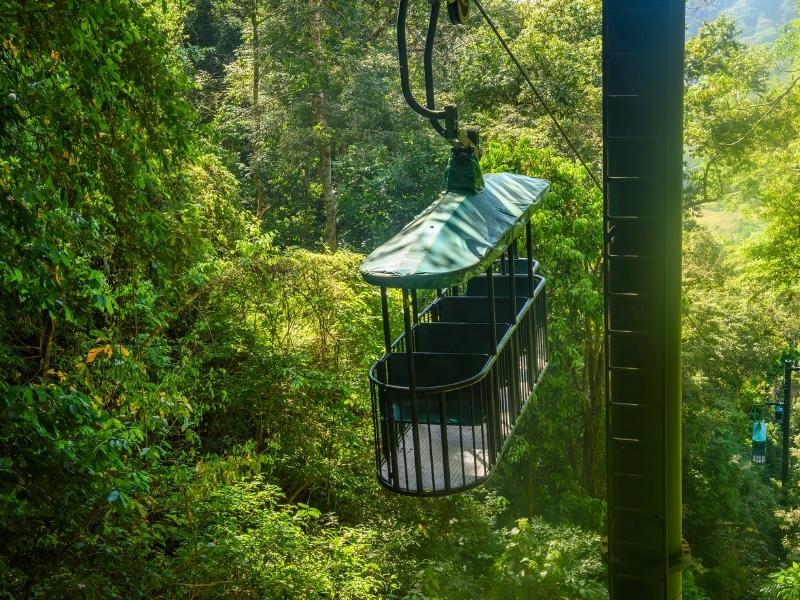
Aerial trams or cable cars are designed to have a minimal environmental impact. They are usually operating in areas with dense rainforests or mountainous terrain, which is hard to see any other way. These rides provide passengers an unforgettable experience, offering breathtaking views of the lush rainforests, scenic landscapes, and abundant wildlife. They can spot monkeys, sloths, birds, and different reptiles. Aerial trams can be found in several locations. So wherever you end you, you may have one nearby.
Animal sanctuaries

While there is an abundance of wildlife in the Costa Rican rainforest wherever you go, animal sanctuaries are a great place to see them concentrated in one place. Visitors can take guided tours to learn about the conservation efforts of each species and observe the animals in a natural setting. Sanctuaries focus on rescue, rehabilitation, and release, so visiting them also means supporting their future. You can donate, sponsor, volunteer, or adopt to help further their cause.
- Jaguar Rescue Center & Sanctuary (Limon), is the home of 90 animals, including sloths, monkeys, ocelots, birds, and reptiles, that cannot be released, mostly due to health reasons. Guided tours can be booked in advance.
- Sloth Sanctuary (Limon) has been rescuing and caring for sloths since 1992.
- Proyecto Asis Wildlife Rescue Center (Alajuela) offers many tours as well as volunteering. You can buy your admission tickets in advance.
- Toucan Rescue Ranch (Heredia)
Beaches
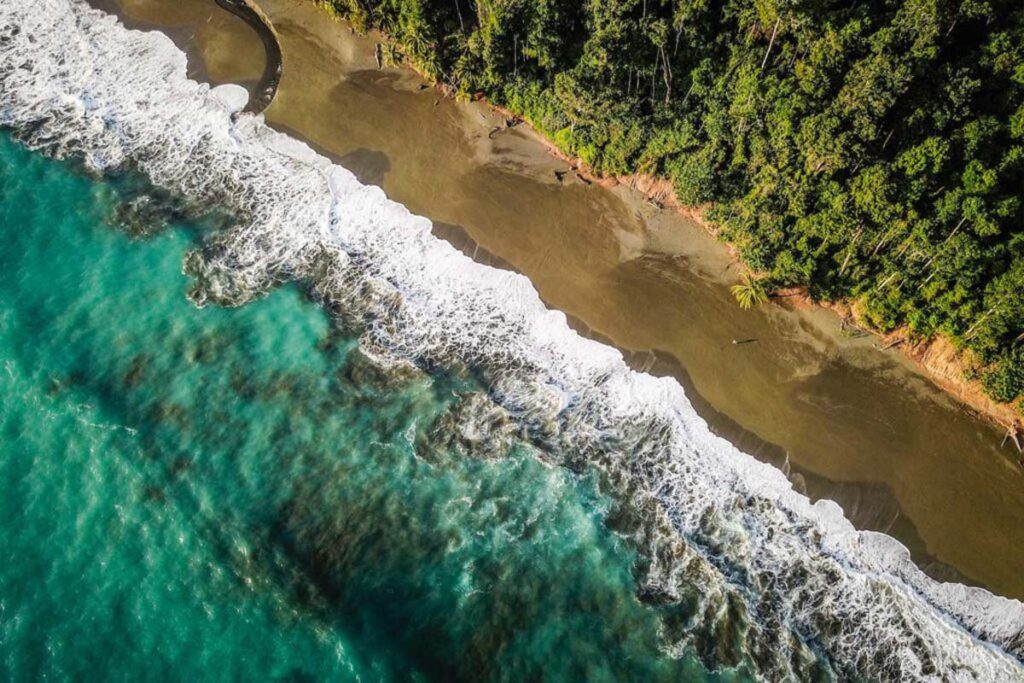
Costa Rica stretches between the Pacific and Caribbean oceans, giving ample opportunities for breathtaking beaches. They feature pristine white sand, turquoise waters, and lush rainforest surroundings, offering opportunities for swimming, sunbathing, and wildlife spotting. Tamarindo Beach is a go-to destination for surfers, offering constant waves to ride on. Playa Conchal is known for its unique sand composed of tiny crushed seashells, which makes it perfect for swimming and snorkeling. Tortuguero and Crocodile Bay are popular departure points for fishing. There are also plenty of opportunities to find secluded beaches without many tourists around you.
“One of Costa Rica’s most beautiful natural wonders, the Whale’s Tail off Uvita Beach is a phenomenon that can be seen at low tide. Twice a day, the ‘Path of Moses’ appears as the sea divides, revealing a sandbar leading to a rocky ridge. And guess what, from the air, it looks just like a whale’s tail! The sensation of walking into the ocean is magical, and quite honestly, a bit scary.” – says Kali Marco, travel writer, and journalist.
Birdwatching

Costa Rica is also known to be a haven for birdwatching enthusiasts. With its remarkable biodiversity and abundance of diverse habitats, this small country boasts an impressive array of bird species. More than 900! Can Negro Wetlands, Corcovado National Park in the Osa Peninsula, and Monteverde Cloud Forest are just some places where you get to observe the famous Costa Rican birds. From vibrant toucans and resplendent quetzals to elusive hummingbirds. Birdwatching tours are one of the main activities eco-lodges in the Osa Peninsula offer, and it is certainly easier to spot them with a knowledgeable guide.
Canyoning
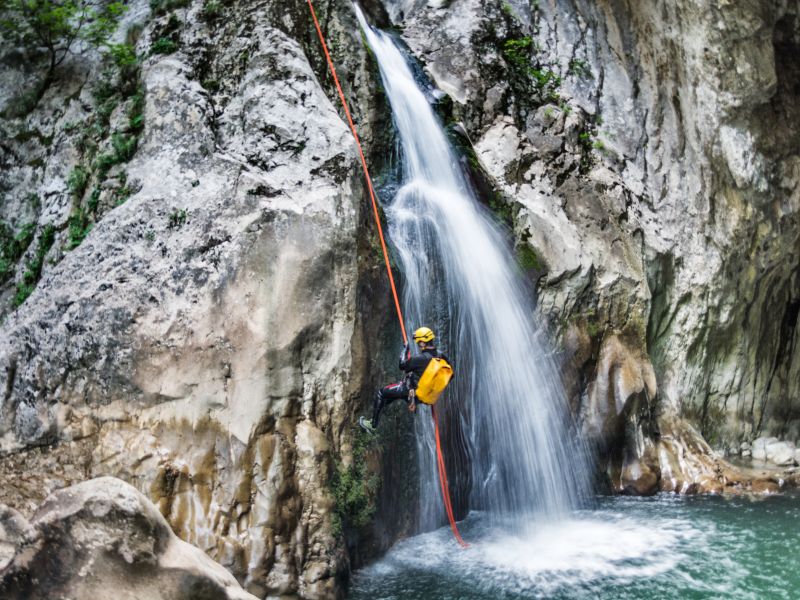
Costa Rica’s diverse landscapes provide ideal canyoning opportunities. Participants can descend waterfalls and explore stunning canyons surrounded by lush rainforests, adding an extra level of excitement to the experience. It is certainly an adventurous outdoor activity that involves, hiking, climbing, rappelling, and swimming. During canyoning, you get to overcome obstacles like waterfalls, rock formations, or hidden pools. It combines elements of adventure, adrenaline, and exploration, making it a thrilling activity for outdoor enthusiasts seeking a rush and a close connection with nature at the same time.
- 4-hour canyoning in La Fortuna’s Lost Canyon (Alajuela), where you can encounter cliffs as high as 150-foot and 200-foot.
- Maquique Adventure Canyoning (Alajuela)
- Gravity Falls Canyoning (Alajuela)
Caves
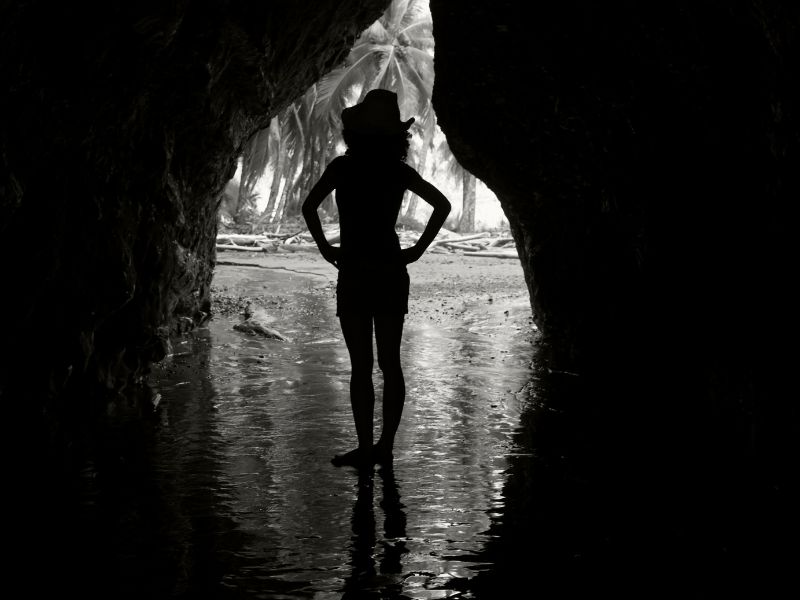
The two most famous caves in Costa Rica are Venado Caves near the Arenal Volcano in Alajuela and the Barra Honda National Park in Guanacaste. Venado Caves has ten caverns totaling over 1.6 miles (2.57 km). It is preserved in its natural state, which means it has no paved path. To get the most out of your experience, a guided tour is advised. The cave system in Barra Honda National Park was also preserved in its natural state, which means you need proper caving equipment and 3-4 hours to complete the tour. However, there is a third one, a hidden gem called Poza Los Coyotes. It is more than just a cave, it is also a natural pool where you can swim, which can be reached with a 10-min hike.
Chocolate tours
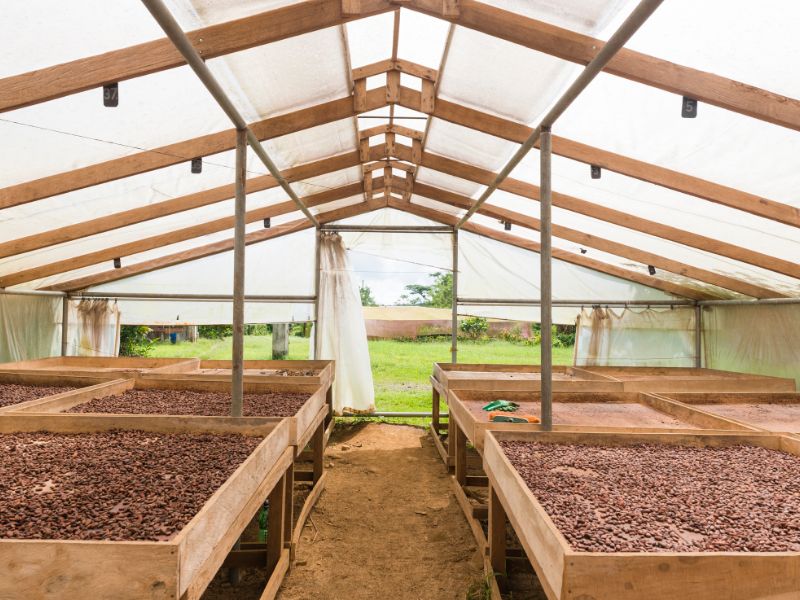
When considering eco-friendly things to do in Costa Rica, not just think of nature, but of supporting the local culture. Chocolate has deep historical and cultural roots in Costa Rica. Indigenous tribes like the Bribri and the Ngäbe have a long-standing tradition of cultivating and consuming cacao. The country’s cacao industry supports local farmers, providing them income and employment opportunities. When you are in Costa Rica, don’t miss out on the chance to learn more about cacao and chocolate.
- Watch and learn how the Bribri tribe makes chocolate (Limon).
- Visit a private cacao plantation in La Fortuna to learn how a small artisan factory makes chocolate from scratch.
- Visit a local family at their home in a remote village near Manuel Antonio to make chocolate with them.
- Eden Chocolate Tour in La Fortuna is quite popular, with hundreds of positive reviews.
“There are several La Fortuna chocolate tours where you’ll have the opportunity to explore local and organic farms and not only get to learn about growing and processing chocolate, but other kinds of tropical fruit as well. The tours are usually provided by a local—and sometimes, even a member of the family who owns the farm—so you’ll also get to learn a little about living in La Fortuna and Costa Rica to boot! And, best of all, you’ll get to taste some of the delicious chocolate for yourself!” – says Jessica Schmidt, the travel blogger behind Uprooted Traveler.
“Visiting the vanilla villa spice farm was one of the unique things my family did in Costa Rica. The variety of spices growing on the plantation – from cacao seeds to vanilla beans, cinnamon bark, nutmeg, peppermint, and more – was impressive! The guide explained how each plant is grown using sustainable farming practices that are respectful of nature. She even taught us the harvesting process for some of these plants – like vanilla beans which require careful attention throughout their growth cycle. After tasting all the delicious spices, we brought spices that are grown and packaged on the spice farm to home with us! I’ll never go back to buying imitation vanilla again.” – says Brodi Cole, a mom of full-time traveling, digital nomad family of three.
City tours
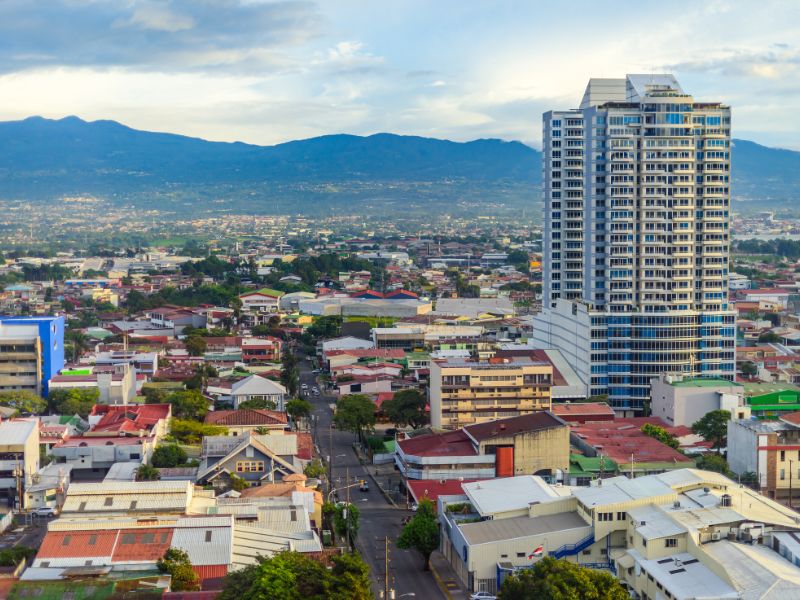
While Costa Rica is one of the leading countries in renewable energy, transportation is still heavily dependent on fossil fuels. Public transport is certainly one way to have a lower carbon footprint than renting a car or using taxis. But there are even better options to sustainably discover large cities like San Jose. Green Circle Vehicles is a car-sharing platform in Costa Rica using only electric cars. Book a guided bike tour or uncover the city with a guided walking tour. Or look for specialty city tours like Bites and Sights for foodies, to explore the local markets.
Coffee tours

Costa Rican coffee has gained an international reputation for its exceptional quality and flavor. Its unique geography, including volcanic soil, high altitudes, and diverse microclimates, provides optimal conditions for growing high-quality Arabica coffee beans. Costa Rica focuses on producing and promoting organic and fair-trade coffee production, but it is not without its challenges. Moving from traditional coffee production to a more sustainable one has been at the forefront for many years. Visit Starbucks’ private plantation called Hacienda Alsacia in Alajuela or visit a local family farm for a more artisan experience.
“We did a tour of Don Olivio, a sustainable and eco-friendly farm outside La Fortuna. In addition to chocolate, this family-run farm also grows coffee, fruits, spices, and medicinal plants. Not only do they farm their crops using organic practices, but the farm is a haven for wildlife with all the trees and vegetation. We saw a sloth and many tropical birds while walking around the farm. The tour is perfect for adults, children, even babies, who will love the fresh fruit they generously hand out.” – says Kristin Danks, who traveled around Costa Rica with her baby.
Cooking classes

People say the way to a man’s heart is through his stomach. The way to fall in love with a country is through its cuisine. Taking cooking classes provides a great opportunity to immerse yourself in the local cuisine, get to know local people, and meet other like-minded travelers. Participating in cooking classes supports local businesses and small-scale farmers within the community. Not only try Costa Rican specialties in local restaurants but learn how to cook them. It will expand your culinary knowledge, and create memorable experiences that go beyond mere sightseeing.
- Learn to cook from a local grandmother called Dona Chela in La Fortuna (Alajuela)
- Take a cooking class with cookbook author Melissa Guzman in Jaco (Puntarenas)
Crocodile safari tours

Crocodiles and their smaller cousins, the caimans, have an increasing population in Costa Rica. They can be found on both coasts, but more so around the Central and Northern Pacific. Their habitat is usually fast-flowing rivers, swamps, lakes, estuaries, and other types of wetlands where the water is murky. The authorities issued warnings not to explore their habitat on your own. Join a guided tour instead, where they take you on boats to see these dangerous but majestic creatures from a safe distance.
- Boat safari along Tempisque River near Tamarindo (Guanacaste) to watch monkeys, iguanas, and crocodiles.
- Boat safari along the Tarcoles River (Puntarenas), where you get up really close.
Dolphin watching
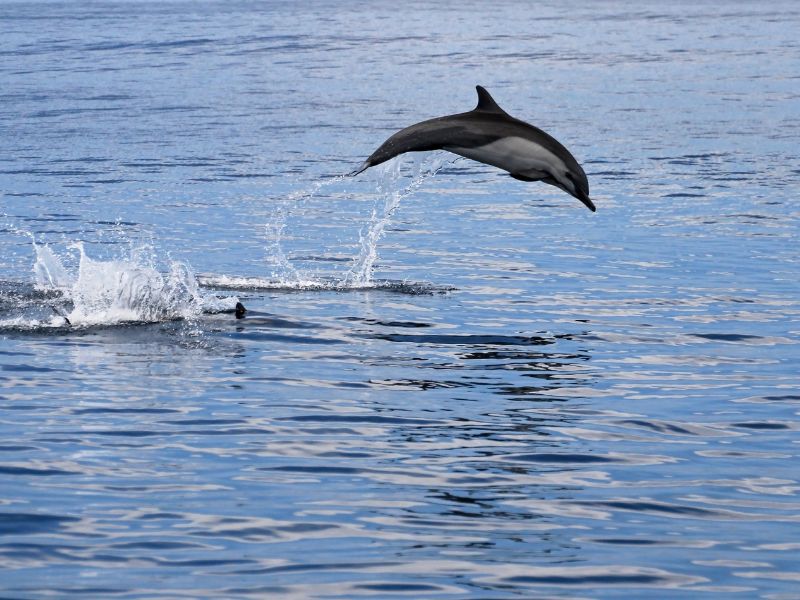
Costa Rica is a great place to observe dolphins in their natural surroundings. How to do it ethically and sustainably? Minimize any disruptions. The best you can do is watch them from a respectful distance and avoid any actions that may disturb them, like chasing, touching, or feeding. You can find them on both the Pacific and the Caribbean coasts. Osa Peninsula in Puntarenas, Ballena National Park in Uvita, or Las Catalinas in Guanacaste are great spots to go. Since whale and dolphin watching are often paired, you can get even more out of one day.
Fishing
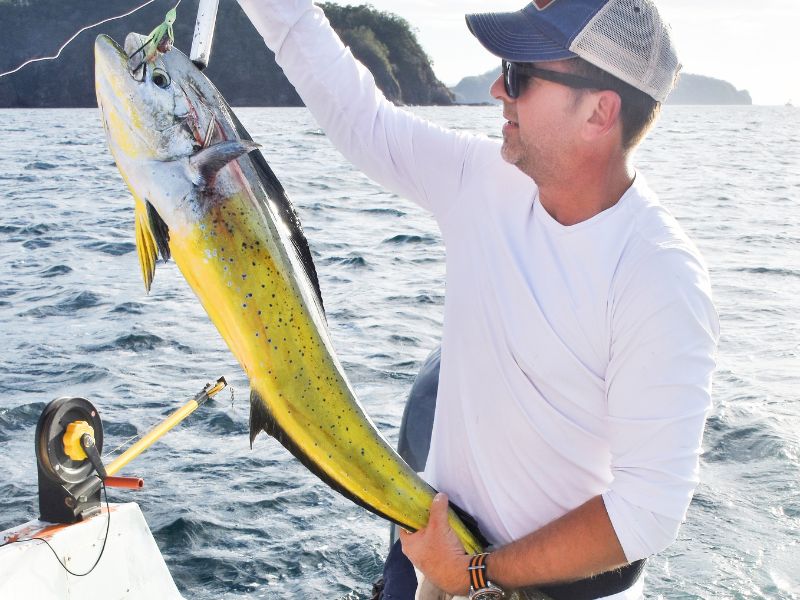
You can try many types of fishing in Costa Rica, from deep-sea fishing (trolling) to freshwater fishing and fly fishing. Tuna, marlin, wahoo, grouper, snapper, cichlids, rainbow bass (guapote), snook, and tarpon are among the many fish you can find there. For freshwater fishing, Lake Arenal should be your destination. Tortuguero in Limon, Tamarindo in Guanacaste, Los Suenos, and Crocodile Bay in Puntarenas are all well-known places for big game fishing. If you want to fish sustainably, find a tour operator focusing on catch and release. The International Game Fish Association (IGFA) sells catch certificates with your name, date, and approximate size so that you can commemorate the catch with a placard.
Hanging bridges
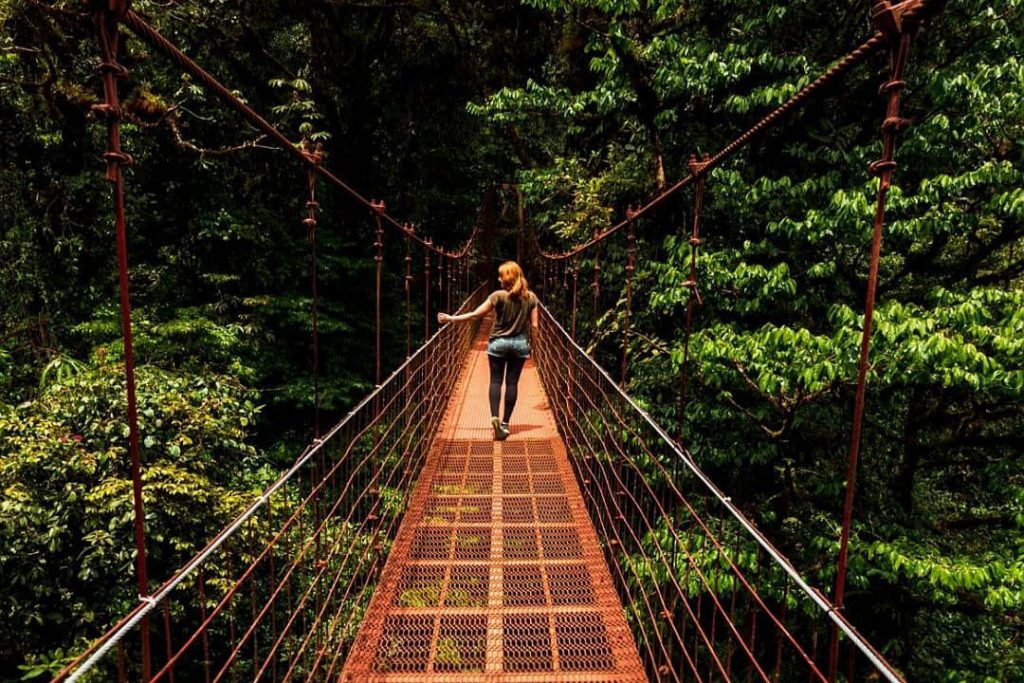
Hanging bridge tours typically involve walking along suspended bridges that go through the rainforest canopy. It is one of those things to do in Costa Rica, perfect for families with kids. These bridges are designed to offer a safe and elevated path for visitors to explore and appreciate the beauty of nature. You can just go there, buy a ticket and do a self-guided tour. Or you take a guided tour with knowledgeable local naturalist guides who provide insights into the area’s flora, fauna, and ecological significance.
- Guided tour in Mistico Park Arenal Hanging Bridges (La Fortuna, Alajuela)
- Guided tour in Selvatura Park (Monteverde, Puntarenas)
- Tenorio Volcano National Park (Guanacaste)
Callie Flack, a full-time traveler in South America, thinks that Costa Rica is worth visiting. She says: “During our time in Costa Rica, a real highlight was exploring Monteverde Cloud Forest on the iconic hanging bridges. Being able to wander through the forest, whilst high up in the canopy, was a magical experience. Peeking through the mist on the lookout for birds and wildlife. We even caught a glimpse of the elusive quetzal as one flew right past us.”
Horseback riding
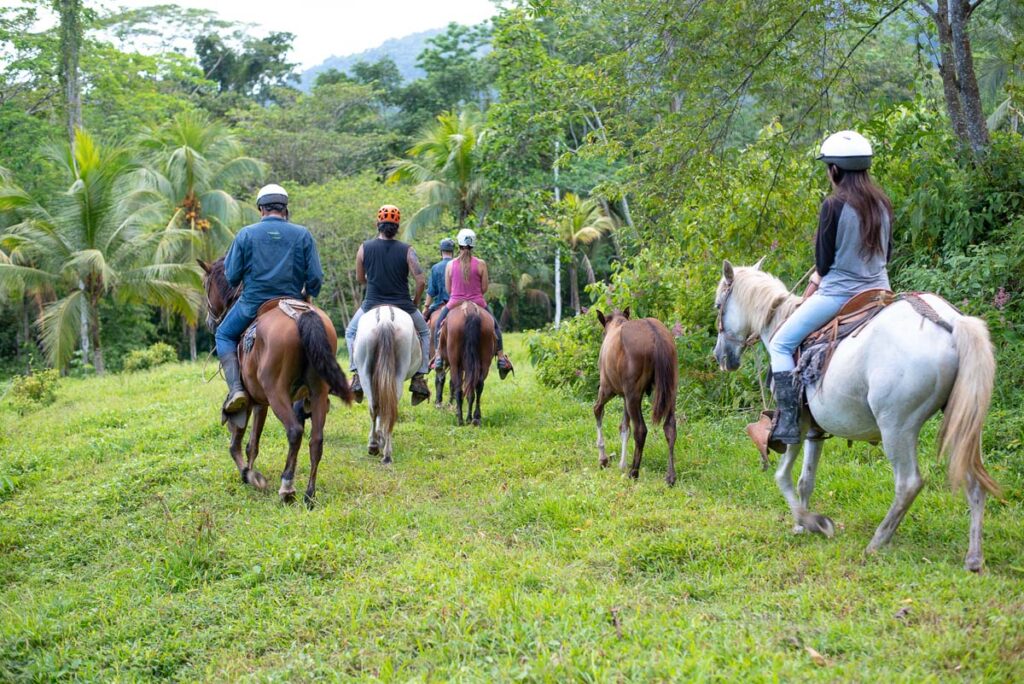
From lush rainforests and mountains to pristine beaches and picturesque waterfalls, exploring these on horseback will give you a unique perspective. During horseback riding in Mistico Park, you can enjoy the view of Arenal Volcano and Lake from a hilltop. Or go horseback riding in Jaco Beach, which guides you through rice plantations, river crossings, and finally, to enjoy the sunset at the beach. Horseback riding is an eco-friendly and sustainable way to explore Costa Rica’s natural wonders by supporting local tour operators and minimizing your impact on the environment.
“Horseback riding in Costa Rica is one of the best ways to see the dramatic and diverse landscapes! We chose to do a tour in Guanacaste province, where we experienced mountainous trails and jungle paths followed by an ending on the beach. It was perfect!” – says Marisa Mercanti-Gagnon, a travel blogger behind Daydream Diaries.
Hot springs
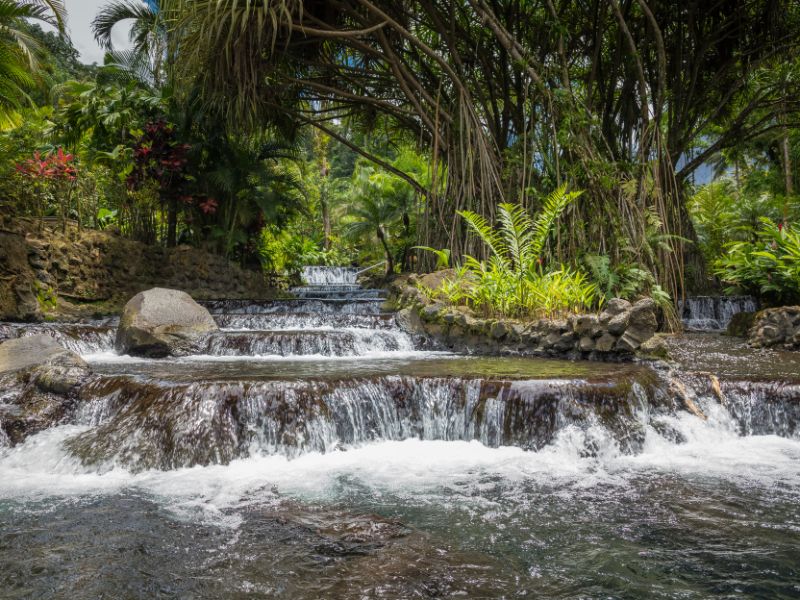
Many hot springs in Costa Rica are usually attached to large resorts, like Baldi Hot Springs or Tabacon Hot Springs. While you can get a day pass, you may still want somewhere more secluded and closer to nature.
Rio Perdido Hot Springs is an eco-hotel with significant sustainability practices. It offers a natural hot springs experience in a beautiful canyon setting, where only 1% of the land is occupied, and the rest is left to nature.
EcoTermales Hot Springs is a family-owned and operated natural hot spring. It stands out as the sole hot spring in La Fortuna, where the water emerges naturally from the ground on the premises.
Sensoria is a family-owned, off-grid rainforest experience operating 100% on solar and hydropower near Rincon de la Vieja National Park. They offer tours to hike to and then dip into natural thermal pools in the middle of the rainforest.
Indigenous culture

Eight indigenous tribes are living in Costa Rica: the Huetar, Maleku, Bribri, Cabécar, Brunka, Ngäbe, Bröran, and Chorotega, accounting for 2.4% of the country’s population. IWGIA, the International Group for Indigenous Affairs, reported that between 35% and 94% (depending on which tribe) are living below the poverty line. If you are looking for ways to travel more sustainably, besides preserving the environment, support local culture and engage in responsible cultural tourism. How to do that? One of the ways tribes earn their income is by welcoming guests to learn about their culture via village tours.
“Learning about the Bribri people, speaking with a shaman, and supporting their livelihood is an unforgettable experience that will certainly stick with you after you leave Costa Rica.” – say travel bloggers, Katie and Ben, while they are recollecting their experience in a Bribri village.
Mangrove tour
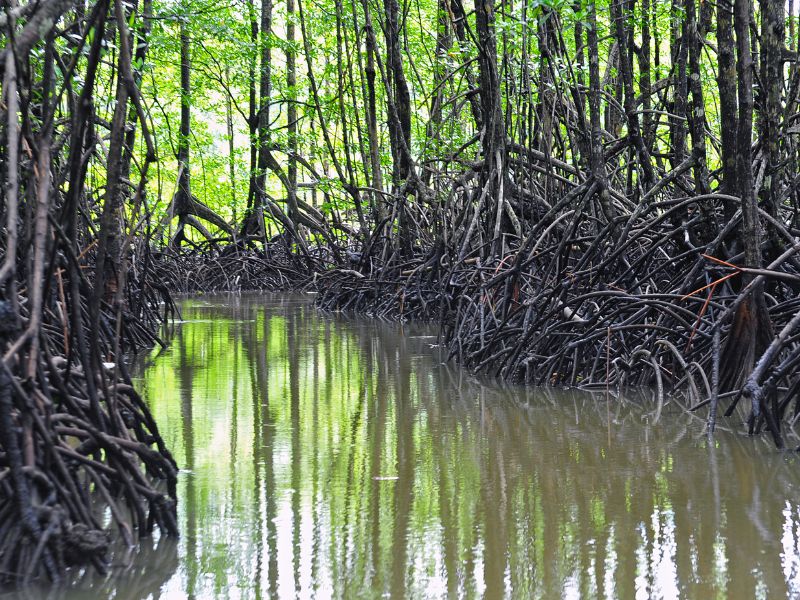
Mangroves are all around the coasts of Costa Rica like the Térraba-Sierpe National Wetlands, being the largest, Tortuguero National Park, the destination for turtle watching, or Palo Verde National Park, a true paradise for birds.
However, there is a smaller mangrove called Damas Island Estuary, which is famous for Capuchin monkeys. The convergence of three rivers forms the estuary: the Paquita River, the Damas River, and the Barú River creating a complex network of mangroves, canals, and lagoons. Many tour operators offer guided boat tours, but if you want to enjoy the calm waters and the serene atmosphere, opt for guided kayak tours.
Manatees

There are not a lot of places in the world where manatees live. Besides the coastal areas of the Caribbean Sea, you can only spot them in the Amazonas basin and the shallow, warm waters of West Africa. Scientists have only confirmed a permanent population in 2022 in Tortuguero National Park. Manatees are an endangered species, and Costa Rica Wildlife Foundation focuses on their conservation. Since the number one reason for the declining number is “collision with boats”, choose kayaking, instead of boat rides to catch a glimpse of them. There are many guided kayak or canoe tours that will help you discover the canals and their wildlife.
National parks
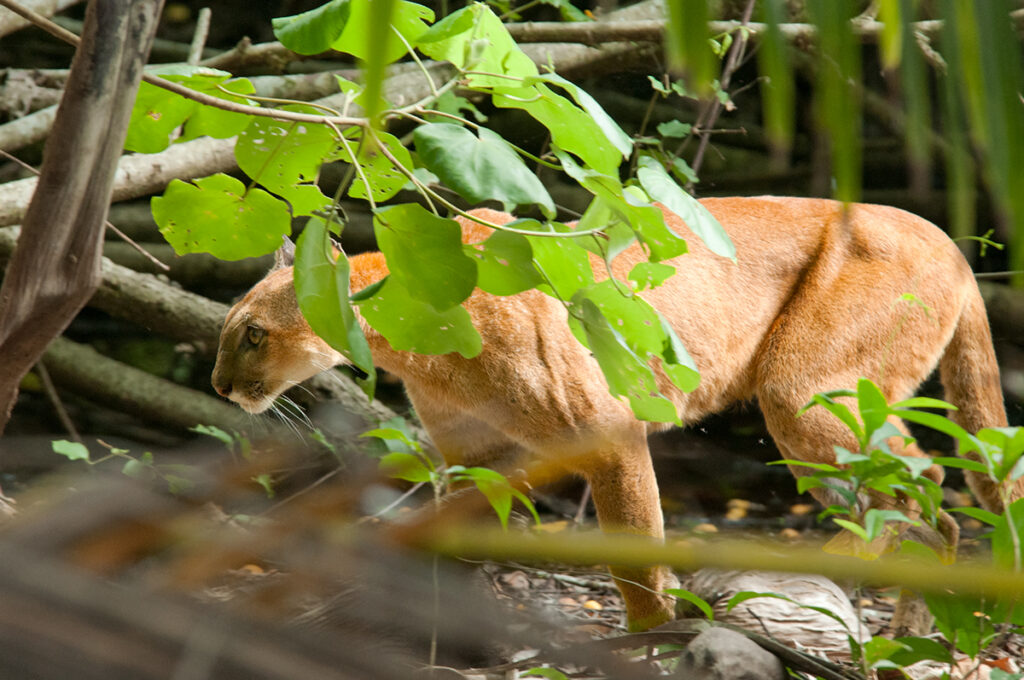
Costa Rica’s official website for SINAC (National System of Conservation Areas) lists 20 national parks, but there are many more preserves and other protected areas. In total, 25% of its territory is protected in one way or another. The spectacular biodiversity is one of the things Costa Rica is famous for. Visiting national parks should be your top thing to do in Costa Rica. Here is a full list with a map.
“There’s no better way to explore the wildlife of Costa Rica than by hiking at Manuel Antonio National Park. Taking a guided tour means you’ll be able to spot the infamous sloths hiding high above you and learn about the wildlife here.” – says Sarah Carter, who has been traveling around the world since 2014.
“Wild and remote Corcovado National Park is by far the best place to see wildlife in Costa Rica. You can only visit the park with a certified nature guide to minimize your impact on the ecosystem. And if you are lucky, you may even spot a puma, like we did.” said Margarita Steinhardt, member of the Australia Society of Travel Writers.
Night tours
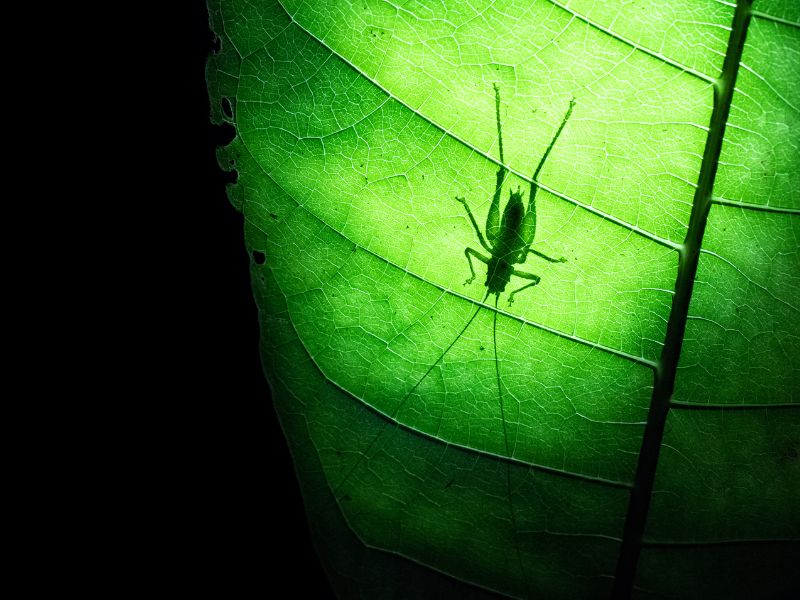
Night walks in Costa Rica offer an extraordinary opportunity to witness the captivating wonders of the nocturnal world. Several species can be elusive during the day. Owl monkeys, kinkajous, small wild cats like ocelots and margays, frogs, toads, bats, snakes, and many insects can be spotted during the night.
- Drake Bay Guided Night Tour with a biologist, Tracie Stice (“The Bug Lady”), has organized night tours since 1997.
- Guided Night Tour in Monteverde Wildlife Refuge
“Since 80% of Monteverde’s wildlife comes out at night, trekking at night into the unknown of what the lush Costa Rican rainforest had to offer was exhilarating.” – said Haley Blackall, a full-time world traveler, about her night walk in Monteverde. “With the canopy of stars above us, we admired the incredible plethora of wildlife, including a camouflage Moss Mantis and got up close and personal with an electric green slithering snake. My husband, of course, obsessed over all the multi-legged creepy crawlers.”
Safari float
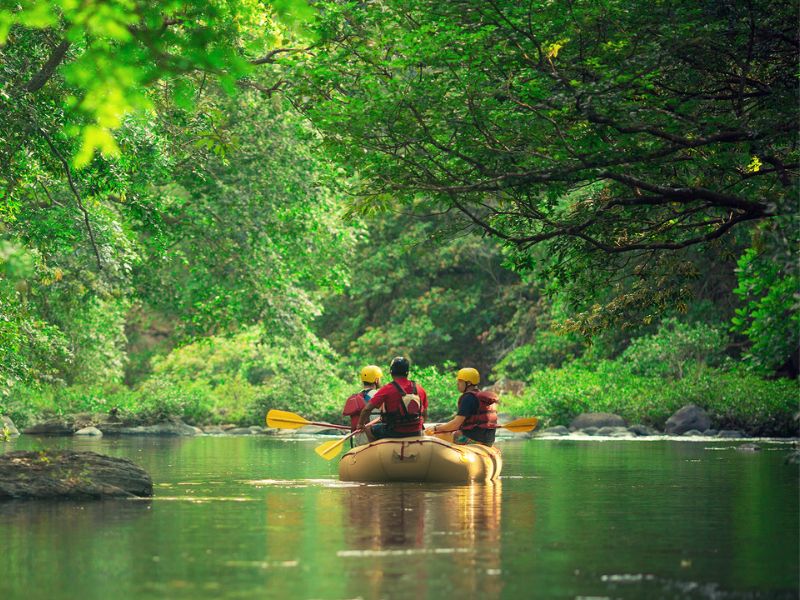
Safari floats are an eco-friendly alternative to boat tours. Imagine large inflatable rafts floating down a calm river. The pace of the float is slow, allowing for a relaxed atmosphere. There is no engine noise, no pollution, and no disruption to wildlife. The calm and quiet nature of this activity allows for a closer encounter with wildlife, as animals tend to be undisturbed by the presence of floating rafts. There are certainly many safari float tours near La Fortuna and for good reason.
“A great half-day activity from La Fortuna is floating down the Peñas Blancas on a raft. We loved that the tour was suitable for our young kids as well. We loved seeing sloths, monkeys, crocodiles, and other cool animals right off the river.” – says Megan, a mom of 4 and travel blogger behind Let’s Jet, Kids!
Sailing
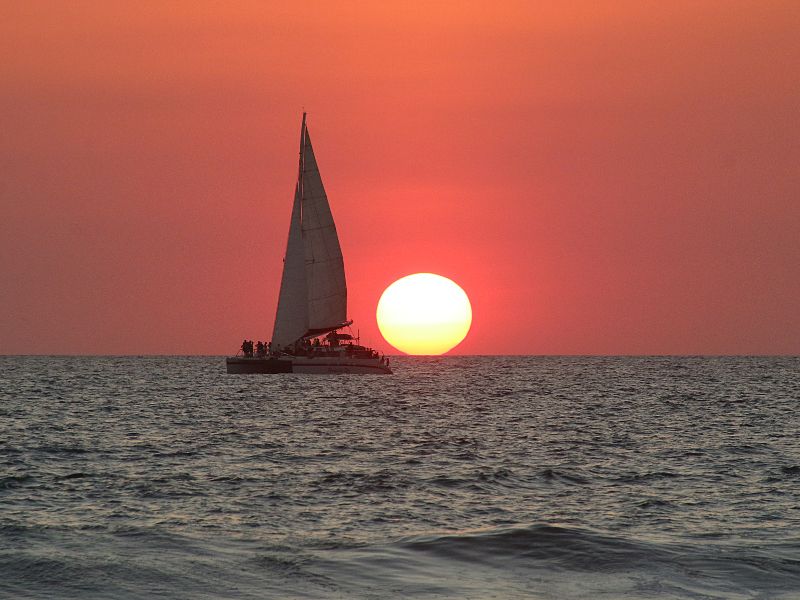
Feeling the wind fill the sails, the warmth of the sun on your skin, and the spray of the water can foster a deep appreciation for the beauty of the natural world. Sailing can offer a relaxed experience, particularly if you have an experienced captain with you. Sailing has a very small carbon footprint and environmental impact compared to motorized boats. There are many sailing tours you can choose from, often paired with snorkeling and scuba diving or dolphin and whale watching.
Sky Fisher, a travel blogger who has been living in Costa Rica for the past 6 years, recommends sailing in Playas del Coco. “I’ve been sailing out of Coco more times than I can count – at least 20 – and each time is special. The most memorable was on a private sailing trip with my friends for my birthday, when a pod of dolphins swam alongside our boat right at sunset.”
Scuba diving
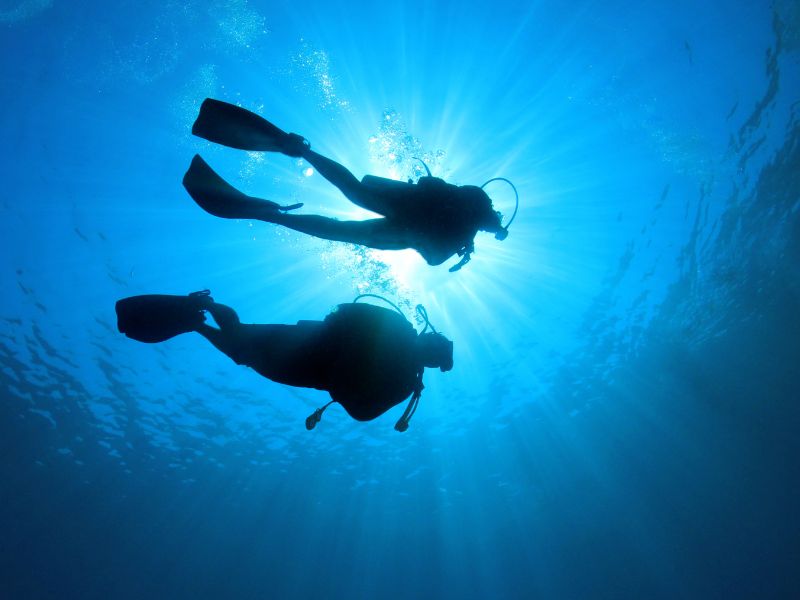
Do you want to dive at one of the UNESCO’s Wold Heritage site? Technically, you can, but before that, you must take a 36-hour boat ride to Cocos Island. If you are looking for something closer, there are plenty of beautiful Costa Rica islands right next to the shore. Caño Island near Osa Peninsula, Cahuita National Park, the home of the largest coral reef in Costa Rica, or Santa Catalina Islands in Guanacaste just to name a few. The really brave divers can go to Bat Islands to swim with a large population of bull sharks.
- TamaDive diving center offers scuba diving tours to Santa Catalina Islands
- Scuba diving to Gulf of Papagayo, but they also offer tours to Bat Islands.
- Scuba diving near Caño Island to see manta rays, sharks, and sea turtles.
“Las Catalinas Islands has some of the best diving waters in Costa Rica. Scuba diving at these islands allows you to see hundreds of types of fish, turtles, manta rays, whales, and even sharks. It allows you to get in the water and see these incredible animals up close in their natural habitat. ” – says travel blogger Pamel Drager, who has been traveling around the world for 10 years.
Sea kayaking
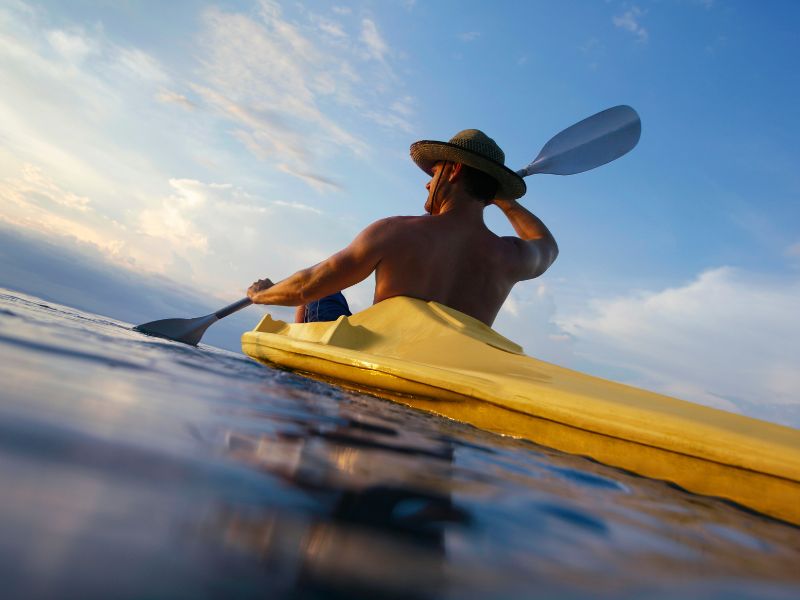
While there are many guided kayak or canoe tours that will help you discover the mangroves, the rivers, and the canals, Costa Rica offers numerous breathtaking kayaking opportunities in the sea as well.
Nicoya Peninsula, on Costa Rica’s northwestern Pacific coast, offers a diverse range of kayaking opportunities. From tranquil bays to rugged coastlines, you can paddle along the peninsula’s pristine beaches, explore hidden coves, and discover secluded islands. The area is known for its stunning sunsets and abundant marine life, making it a captivating destination for sea kayaking enthusiasts.
There is also a special night kayak tour in its bioluminescence bay called, Paquera Bay. There are at least 35 bioluminescence bays around the world, and Costa Rica is not the most famous one. Still, it is a sparkling opportunity in nature not to be missed.
Snorkeling
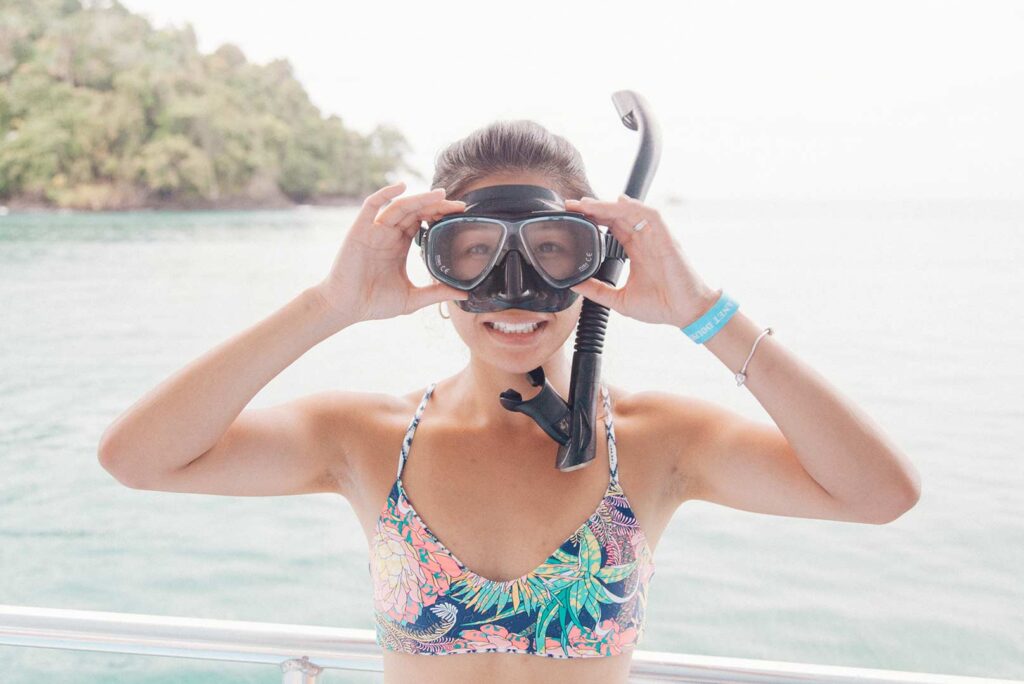
Scuba diving and snorkeling often come hand in hand. Caño Island (Osa Peninsula), Cahuita National Park, and Santa Catalina Islands can also be a destination for snorkeling. There are also many tour operators who use motorized boats, but you should opt for a more eco-friendly catamaran tour where the wind is the only power you need.
Surfing
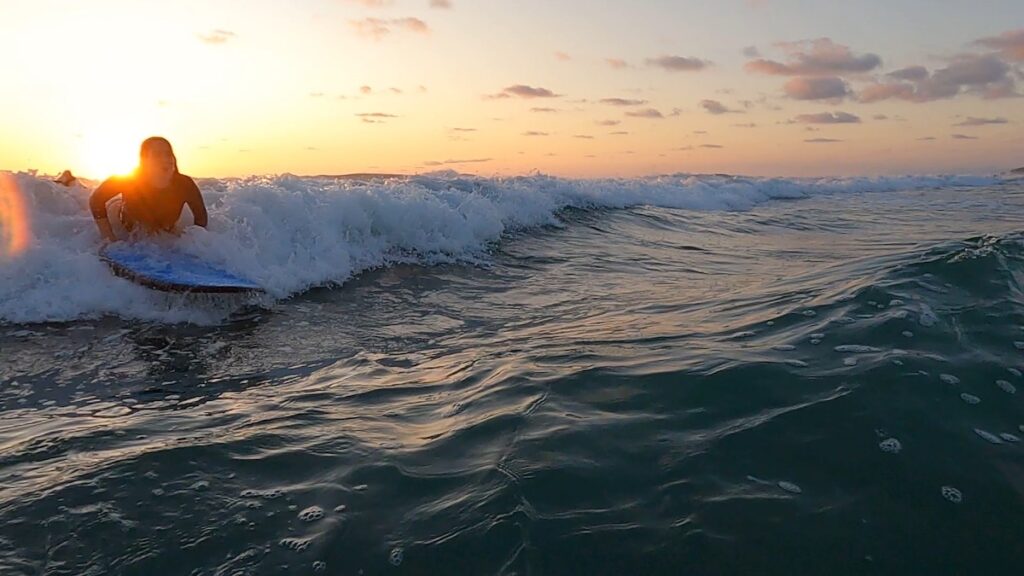
The Pacific Coast is longer, spanning around 631 miles, while the Caribbean Coast is shorter, measuring about 170 miles. Still, there are ample opportunities to go surfing. Witch’s Rock (Playa Naranjo), Playa Grande, Tamarindo, Jaco, and Playa Negra are perfect spots. There are many eco-lodges in Costa Rica offering surf camps and promoting the protection of the coastal ecosystems.
- Surf lessons in Tamarindo, Santa Teresa, Quepos, or Uvita.
“Surfing in Costa Rica is a fun eco-friendly activity that combines the thrill of catching waves with the stunning natural scenery of the palm tree-lined coastline. I enjoyed surfing at Santa Teresa on the Nicoya Peninsula, which tends to have reliable and powerful waves year-round that suit a variety of levels, from beginners like me to the more advanced.” – says Melanie Ferguson, a travel blogger at Postcards & Places.
Tubing

Tubing is like canyoning but on a float. It is a popular activity for adventure seekers and families looking for a fun and memorable experience. It requires minimal skill or experience, making it accessible to people of various ages and fitness levels. You get a helmet, a life jacket, and an inflatable tube to navigate yourself down calm rivers and occasional small rapids. It offers a unique perspective to enjoy the sights and sounds of nature. Rio Celeste, Rio Negro, and Rio Colorado are popular rivers for this activity.
Turtle watching
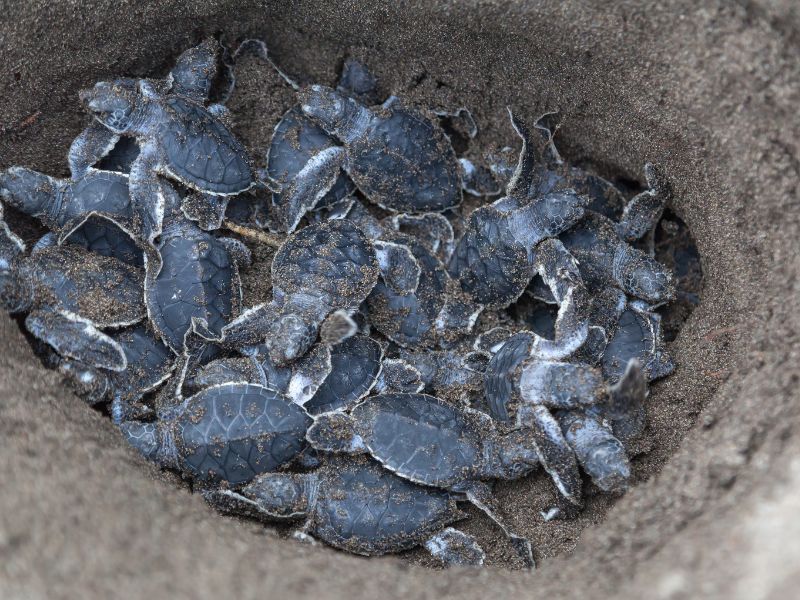
Costa Rica beaches host the nesting of 5 turtle species: Letherback, Hawksbill, Green, Loggerhead, and Olive Ridley. Did you know that Tortuguero means home of the turtles in Spanish? No wonder, 4 out of these 5 lay eggs here. The nesting season starts in March and goes until October, as the different species arrive after each other and not at the same time. The eggs hatch in 1-2 months.
Turtle watching in Costa Rica allows you to witness the nesting rituals of these majestic creatures as well as the hatching of the little ones. This activity is only eco-friendly if you can respect the turtles by maintaining a respectful distance and avoiding using flash photography or excessive lights since it is at night. Choose responsible tour operators with the same ethos.
Volcano hiking

Costa Rica has 6 active and 61 dormant volcanoes. The Arenal Volcano is the most famous one, but it is resting since 2010. Poas Volcano is the most active, but its last major eruption was in 1910. The others are Rincón de la Vieja, Irazu, Tenorio, and Turrialba. Active volcanoes exhibit fascinating geothermal features such as steam vents, hot springs, and bubbling mud pots. Volcanic activity can be unpredictable, and conditions may change rapidly. We recommend visiting them with guided tours.
“Hiking at the Irazu Volcano National Park is one of the best places to visit in Costa Rica if you want to enjoy an inexpensive eco-friendly activity without spending a lot of money. Irazu is the highest and the largest active volcano in Costa Rica, at 11,260 feet tall and 500 square kilometers at its base. You can get to this national park from the most popular places in Costa Rica, like La Fortuna, Manuel Antonio, or the Caribbean side of Costa Rica.” – says Daria, travel blogger form The Discovery Nut.
Volunteering
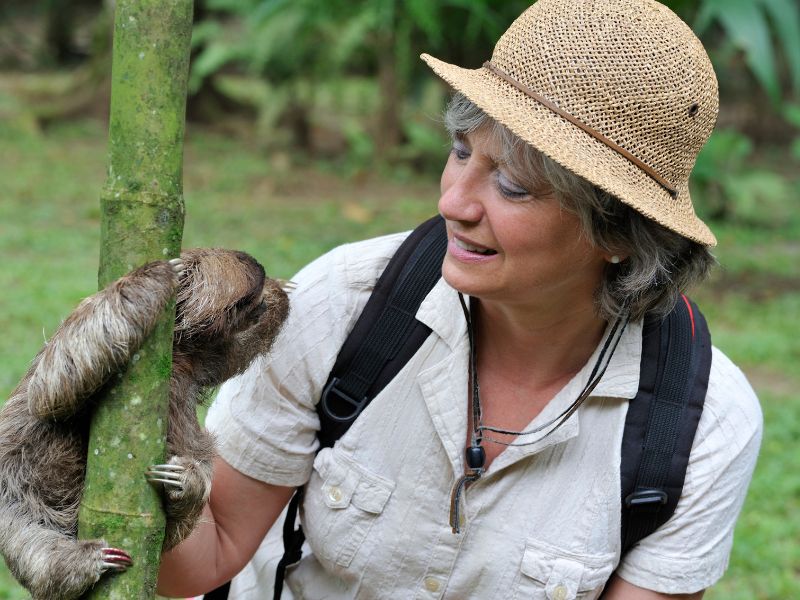
There are various volunteer opportunities available in Costa Rica, ranging from environmental conservation projects to community care initiatives. Volunteering while traveling is a great way to contribute your time and skills to meaningful causes while gaining a deeper understanding of the country and its people. Volunteer opportunities vary from half-day to long-term, but in any event, do your research and contact them in advance.
According to Volunteerworld, Costa Rica is one of the top destinations for 2023, with more than 160 programs to get involved with. Lots of them are available starting from a minimum of one week’s commitment. From working with animals and participating in beach cleanups to teaching English and help in community construction projects.
GoEco is an ecotourism company, connecting volunteers with more than 150 projects all around the world. They offer 7 projects in Costa Rica, usually with a minimum of 2 weeks’ commitment. For example, working with sloths and other Costa Rican animals at the Wildlife Rescue Center, supporting the Montezuma Sea Turtle Program, or the See Turtle Conservation in Ostional Beach.
Waterfalls
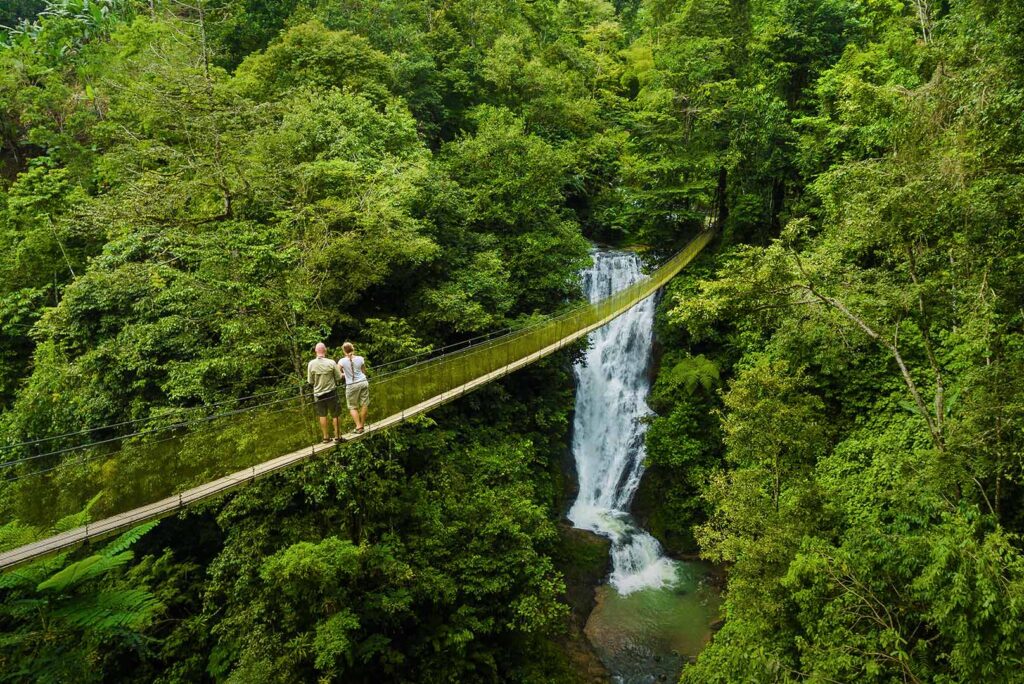
Costa Rica is blessed with an abundance of waterfalls due to numerous factors related to its geographical features and climate. It has a rugged, mountainous terrain, with numerous volcanic mountain ranges and highland areas. These steep slopes provide ideal conditions for the formation of beautiful waterfalls. Its climate is tropical, which receives high levels of rainfall throughout the year. Costa Rica also focuses on environmental protection, leaving the waterfalls and their surroundings undisturbed. Counting how many are there is challenging, but here are the 25 most beautiful waterfalls in Costa Rica. Take your pick.
- The highest is Diamante Waterfalls (in San Jose), with a 300-meter drop.
- Blue Falls (in Alajuela) has such a vibrant blue color, which makes it one of the best to go swimming.
- For good reasons, La Fortuna Waterfall (in Alajuela) is among the most popular. Buy your early admission ticket to skip the line.
“We visited the Rio Celeste Waterfall during our trip there. Located in Tenorio National Park, this stunning Gatorade blue waterfall allowed us to wander through nature and admire its beauty. Although the trail is a workout to get here, I think it is so worth it. Plus, we saw a ton of wildlife along the train including a vine snake and a Toucan,” says Samantha Oppenheimer, a travel blogger of Find Love & Travel.
Whale watching
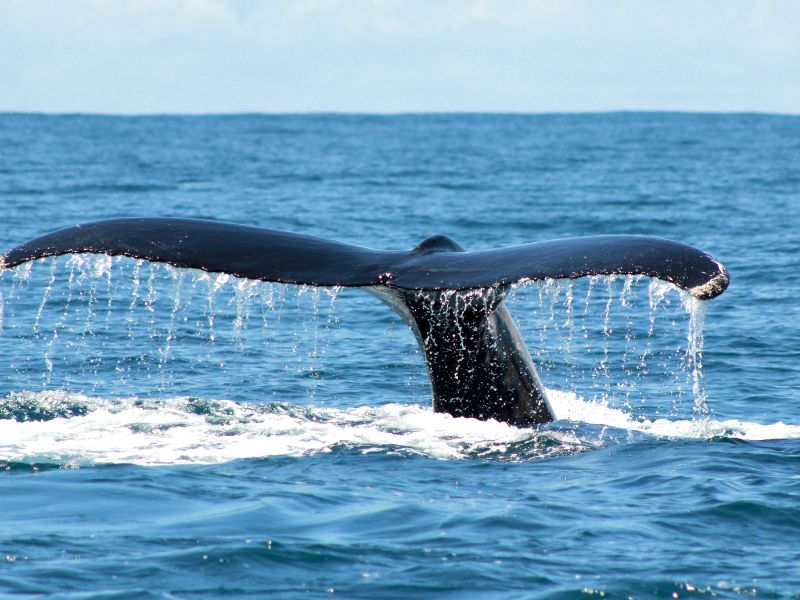
From July to October and December to March, humpback whales migrate in the Pacific Ocean near Costa Rica. And visitors have a high chance of spotting these majestic creatures. It’s important to note that whale-watching experiences are seasonal, and the timing can vary even during the aforementioned months. Even if you are there at the “right time”, you may not see any. But that is wildlife for you.
- Whale watching tour in Ballena National Park (Uvita)
- Whale watching tour in Drake Bay (Osa Peninsula)
“Costa Rica offers some of the best whale watching in the world. The humpback whales roam the waters of the Southern Pacific Coast and I was very fortunate to spot them along the Osa Peninsula. Each year, these magnificent creatures make their way to the warm waters off the coast of Costa Rica to give birth. Witnessing these gentle giants in their natural element, while living in Costa Rica, was one of the best experiences of my life. It makes you realize the significance of nature and the importance of protecting the environment and its inhabitants.” – says Ray, a travel blogger, who has traveled to more than 61 countries.
White water rafting
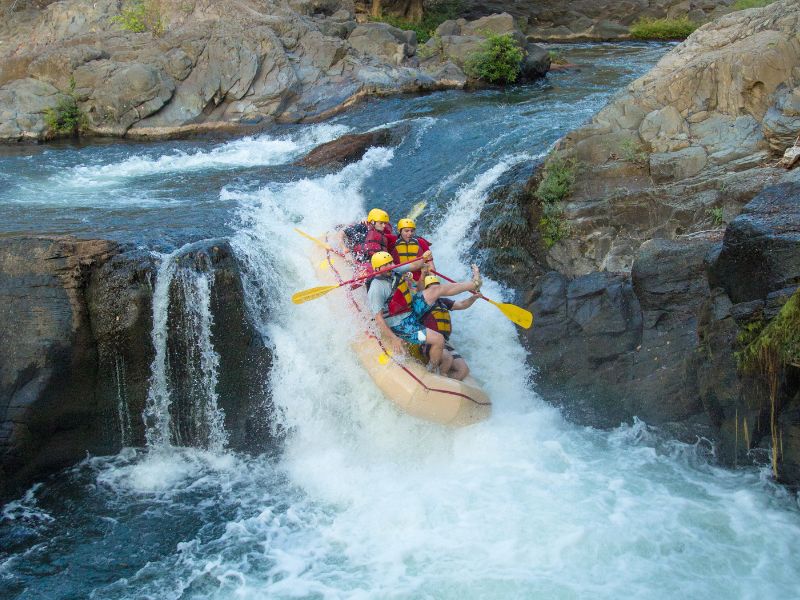
Costa Rica rivers are suitable for rafting classes II-IV, where II means for beginners and IV for experienced rafters. The most popular rivers are the Sarapiqui River (in Heredia), the Pacuare River (in Limon), and the Balsa River (in Alajuela). Navigating through fast-flowing rivers, turbulent rapids, and challenging obstacles creates a sense of excitement and adventure. Not to mention it takes place in the rainforest going through canyons, gorges, and scenic river valleys, which may not be accessible in any other ways.
- Rafting on Balsa River Class II-III
- Upper Balsa River Rafting Class III-IV
- Rafting on Sarapiqui River Class IV
- Rafting on Pacuare River Class III-IV
Yoga
Yoga seems like an activity you can do anywhere in the world. Why would it be one of the things you do in Costa Rica? One of the main reasons people turn to yoga is its ability to reduce stress and relax. Joining a yoga retreat or taking yoga classes in stunning places will stimulate the senses in unique ways. A gentle breeze, the warmth of the sun, the sound of birds chirping, or the scent of flowers can enhance your yoga experience.
Zip-lining
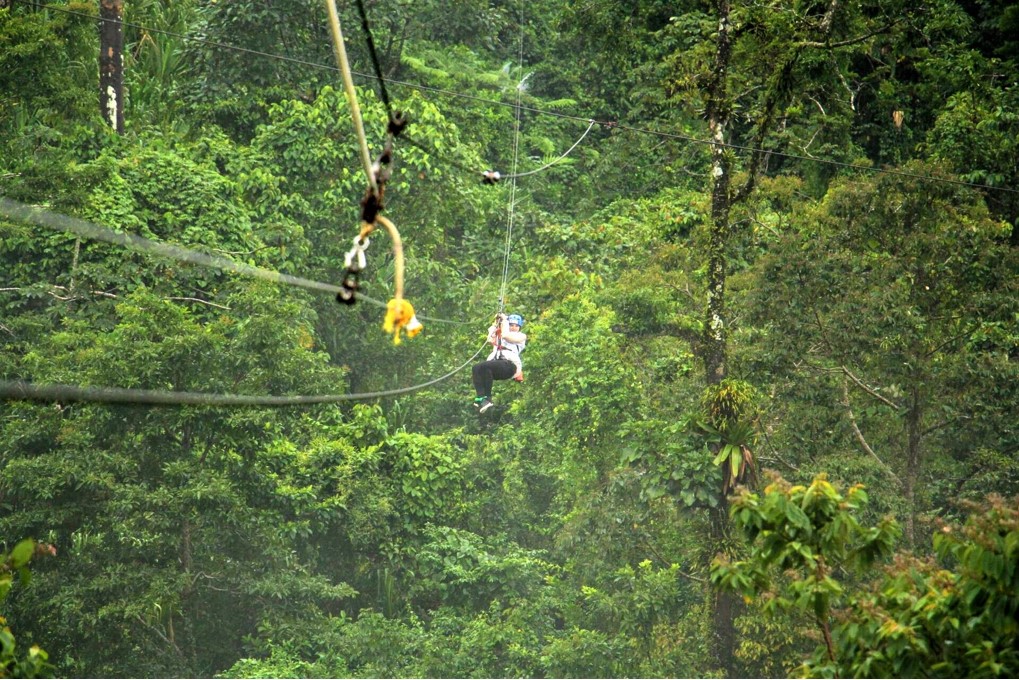
Zip-lining has become a beloved activity worldwide, captivating adventure enthusiasts with the exhilarating experience of soaring through stunning landscapes while suspended in midair. However, it is important to recognize that Costa Rica holds its origin back to the 1970s. If you happen to be visiting Costa Rica, seize the opportunity to try zip-lining. We collected the best 20 zip-lining parks in Costa Rica in our comprehensive guide, which provides all the details you need.
- The longest one is Arenal Mundo Adventure Park, with 12 zip lines.
- Superman zip line in Diamante Eco Adventure Park with a 30-foot free fall jump.
- You can zip line 100% Aventura Adventure Park for 2 hours straight.
Where to Stay in Costa Rica
If you are looking for eco-friendly things to do in Costa Rica, you are probably open to staying in eco-friendly accommodations. You are at the right place, this website is all about the most sustainable eco-lodges all around the world.
Emese Maczko is a travel blogger behind Eco Lodges Anywhere. Having explored several destinations around Europe, the US, Indonesia, and Australia, and resided in Germany, the United Kingdom, and Luxembourg, Emese possesses a keen understanding of diverse cultures and an appreciation for the beauty of each destination she visits. She advocates for sustainable travel and ecotourism.








